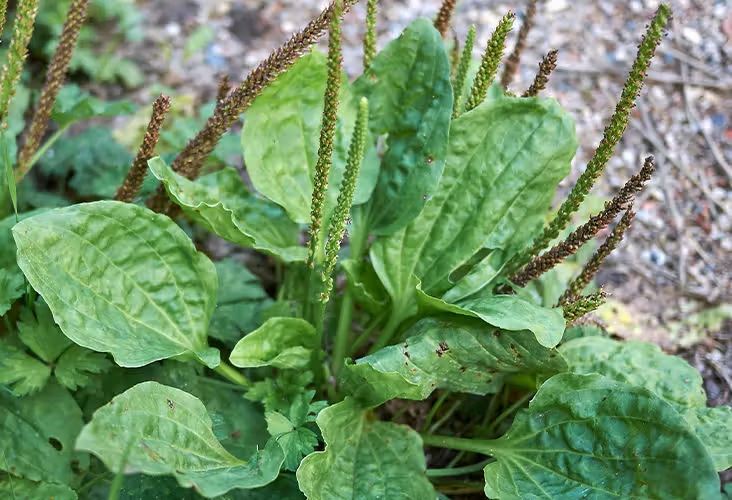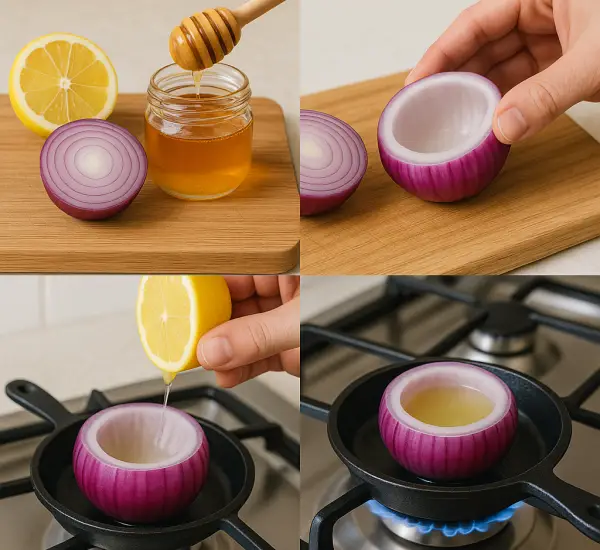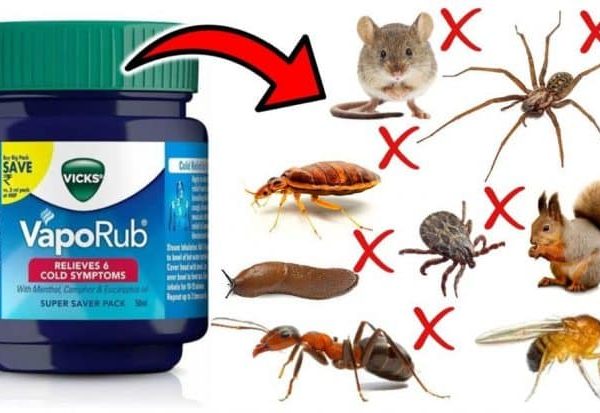Plantain weed, scientifically known as Plantago major, is an edible and medicinal plant commonly found in yards, fields, and along roadways. Originating from Europe and parts of Asia, it is now widespread across temperate regions worldwide. Despite its reputation as a stubborn weed, plantain offers numerous health benefits and has been used in traditional medicine for centuries. Here’s what you need to know about its uses, nutritional content, and potential risks.
What is Plantain Weed?
Plantain weed, also known as broadleaf plantain, is not related to the banana-like plantain fruit. It is a hardy, perennial plant with large, oval-shaped leaves that form a rosette pattern close to the ground. The plant’s seeds grow on tall, slender spikes that emerge from small, yellowish-white flowers. It thrives in areas where the soil has been disturbed, such as roadsides, gardens, and construction sites.
Historically, plantain weed has been used in herbal medicine for a variety of ailments, including coughs, wounds, constipation, and even digestive issues. While modern scientific research has yet to confirm all of its traditional uses, some studies support its potential health benefits.
Edible Parts of Plantain Weed
Several parts of the plantain weed are edible and can be incorporated into your diet:
- Leaves: The young, tender leaves can be eaten raw in salads or smoothies. Older leaves, which may be tougher and stringier, can still be used in soups, stews, or sautéed like other leafy greens. Cooking the older leaves helps soften their texture and make them more palatable.
- Seeds: The seeds, which grow on tall spikes, have a nutty flavor and can be consumed as well. They are sometimes referred to as “poor man’s asparagus” because of their appearance. Even when the seed spikes turn brown, the seeds remain edible. However, consuming a large quantity of plantain seeds may cause a drop in blood pressure, so moderation is advised.
- Seed Shoots: These shoots can also be harvested and used in various dishes for added crunch and flavor.
Nutritional Value of Plantain Weed
Plantain weed is highly nutritious, containing essential vitamins and minerals such as:
- Calcium: Supports bone health and muscle function.
- Vitamin K: Plays a crucial role in blood clotting and bone health.
- Vitamin C: Acts as a powerful antioxidant, boosting the immune system and promoting healthy skin.
- Vitamin A: Supports eye health and immune function.
Adding plantain weed to your diet can help enhance nutritional intake and support overall health.
Medicinal Uses of Plantain Weed
Plantain weed has a long history in traditional and herbal medicine for various health conditions. Here are some of the potential health benefits that have been studied:
- Anti-Inflammatory Properties: Plantain leaves contain compounds such as tannins, glycosides, terpenoids, and flavonoids, which have anti-inflammatory effects. Animal studies have shown that plantain extract may reduce inflammation, such as that caused by acetaminophen-induced liver injury. While more research is needed to confirm these effects in humans, its traditional use as an anti-inflammatory remedy is promising.
- Digestive Health: The seeds of plantain weed are rich in soluble fiber, similar to psyllium. This type of fiber can help bulk up stools and facilitate bowel movements, making it useful for managing diarrhea and promoting regular digestion.
- Wound Healing: Plantain has been used as a poultice for wounds, burns, and insect bites due to its antimicrobial, antioxidant, and anti-inflammatory properties. In one study involving people with diabetic foot ulcers, a gel containing aloe vera and plantain weed significantly reduced ulcer size compared to a placebo. The study participants did not experience any adverse side effects, highlighting its potential for promoting skin healing.
How to Use Plantain Weed
Plantain weed can be used fresh or as a supplement, depending on your preference:
- Fresh Plant Use: If you have plantain growing in your yard, you can add the young leaves to salads, smoothies, or soups. The seeds can also be harvested and used as a topping for salads or baked goods. Cooking the older leaves can help reduce their toughness.
- Herbal Supplements: Plantain supplements are available in various forms, including powders, capsules, and extracts. The standard dosage for plantain supplements is generally 3 to 5 grams per day. It can also be applied topically as a powder to help heal minor wounds or skin irritations.
- Topical Application: Plantain weed can be used to make salves or poultices for cuts, insect bites, or rashes. To make a simple poultice, crush fresh leaves and apply them to the affected area. Cover with a bandage and let it sit for a few hours to help soothe the skin.
Identifying Plantain Weed
To identify plantain weed, look for the following characteristics:
- Leaf Shape: The leaves are large, oval-shaped, and grow in a spiral rosette close to the ground.
- Seed Spikes: The seeds grow on tall, slender spikes that emerge from small, yellowish-white flowers.
- Growth Environment: Plantain is typically found in temperate regions where the soil has been disturbed by human activity, such as gardens, parks, and roadsides.
Potential Risks and Side Effects
While plantain weed is generally considered safe to eat, some people may experience side effects:
- Digestive Issues: In rare cases, consuming plantain may cause nausea, vomiting, bloating, or diarrhea. It is advisable to start with a small amount if you are trying it for the first time.
- Allergic Reactions: Though uncommon, some individuals may experience skin irritation or allergic reactions when handling plantain weed. If applying it to the skin, perform a patch test by applying a small amount to your forearm and wait for 24 hours to see if any adverse reactions occur.



